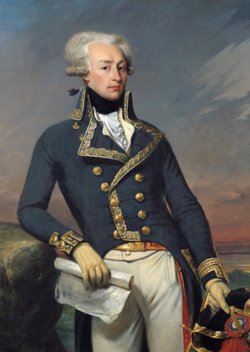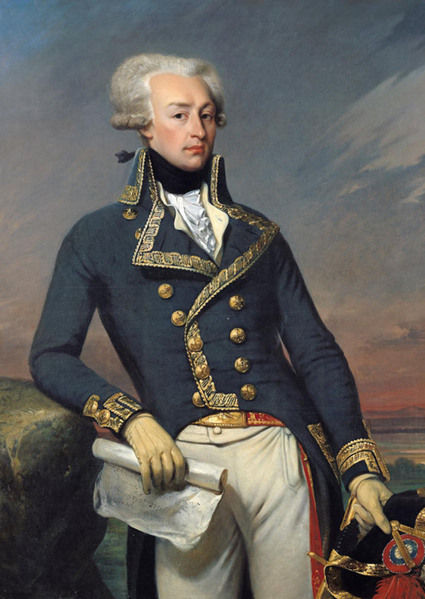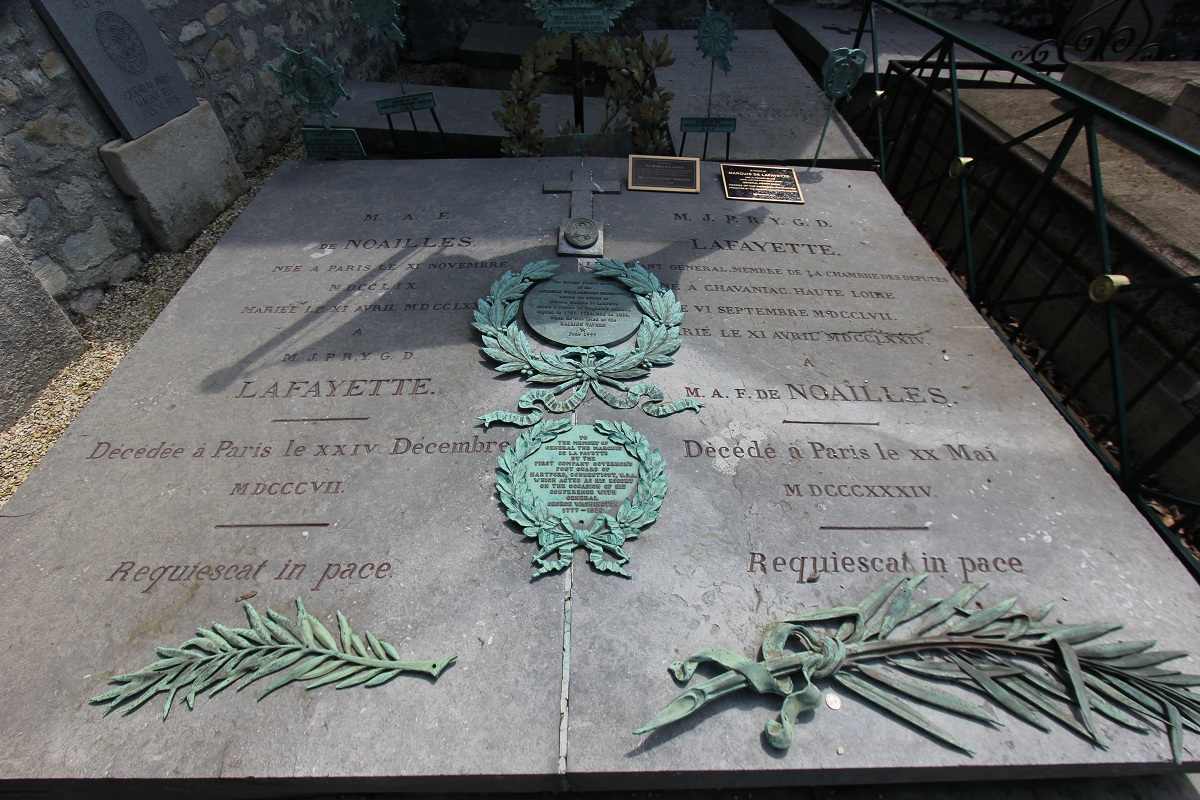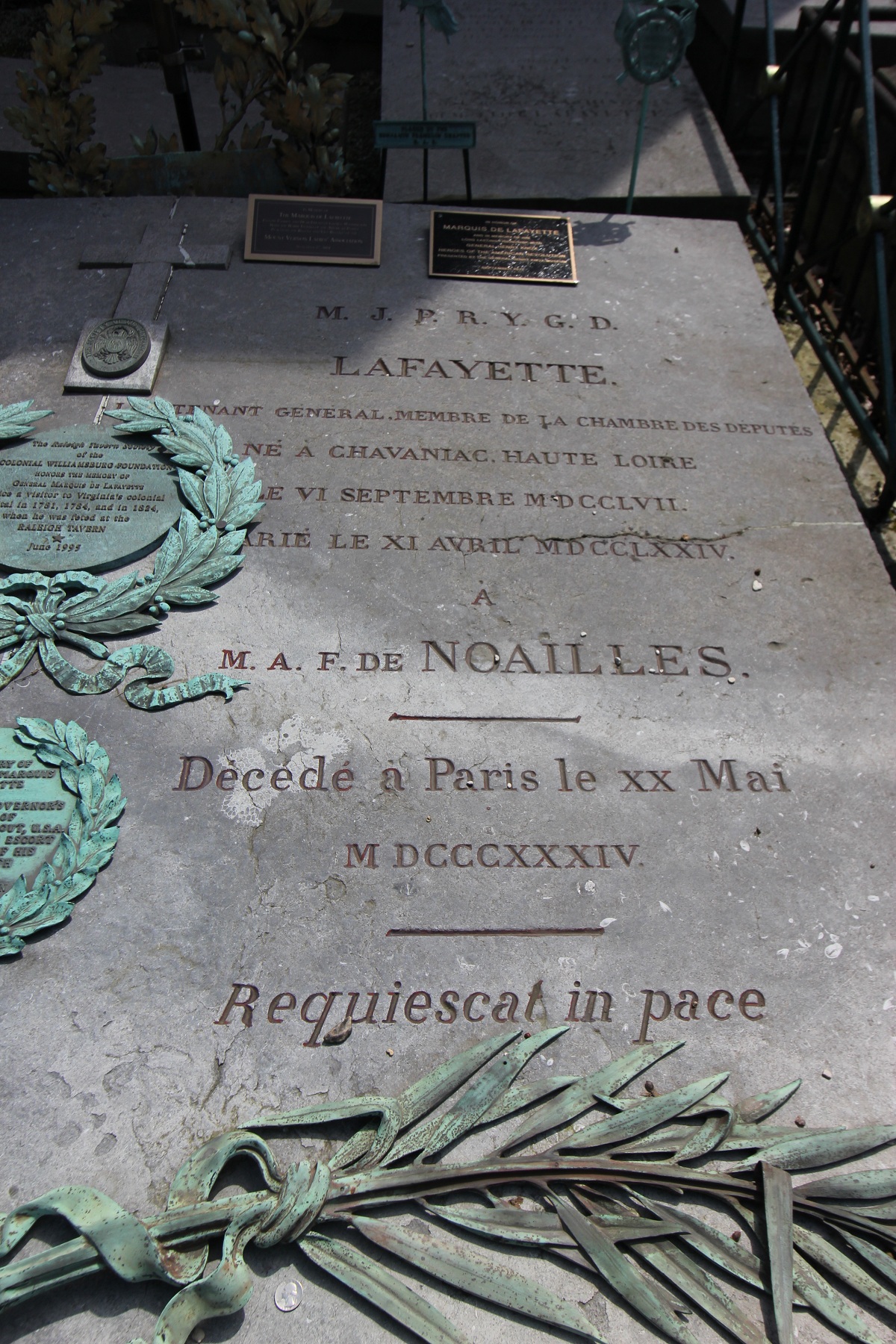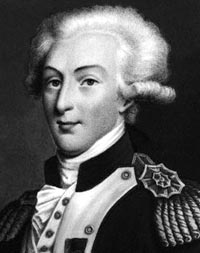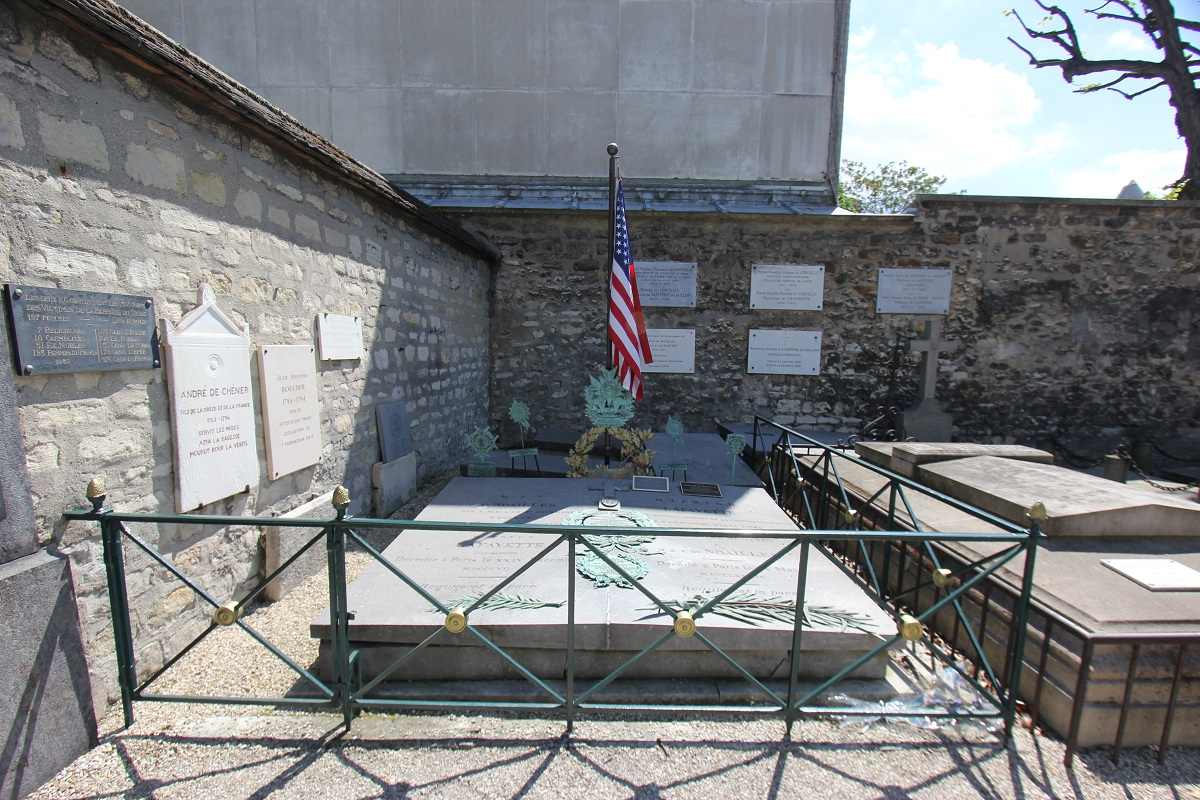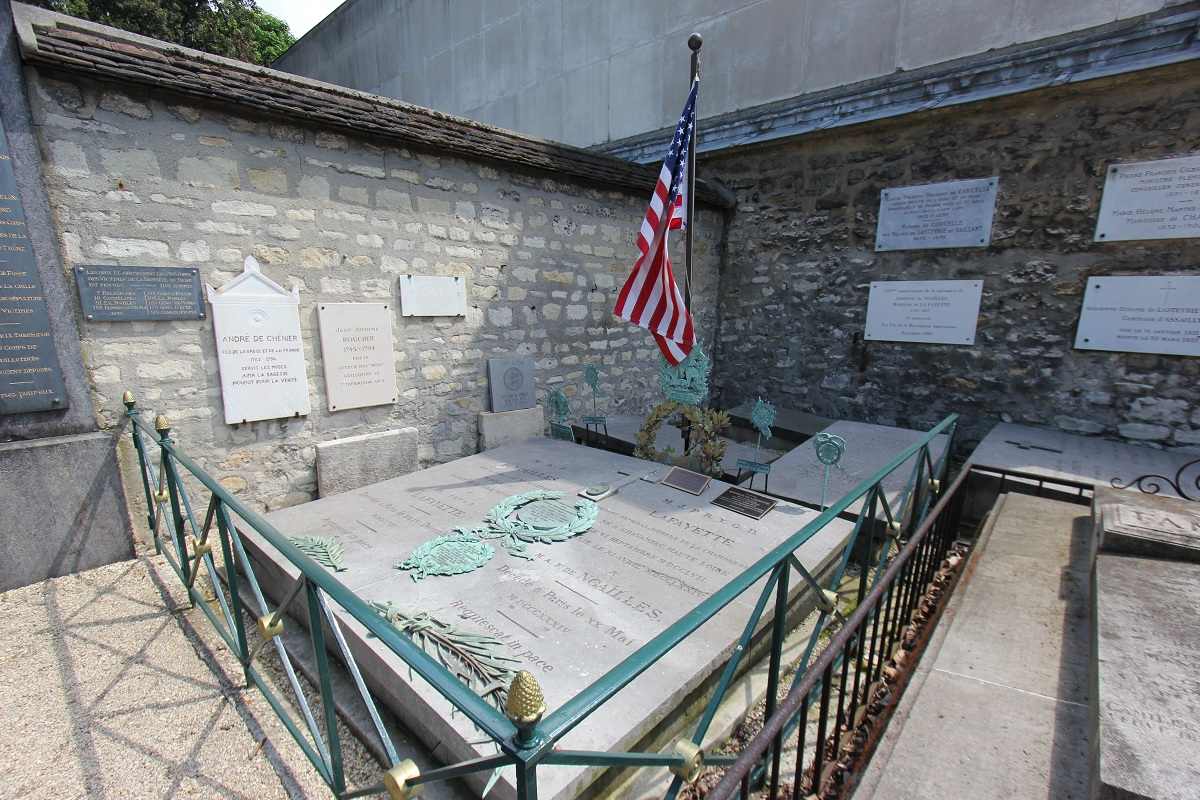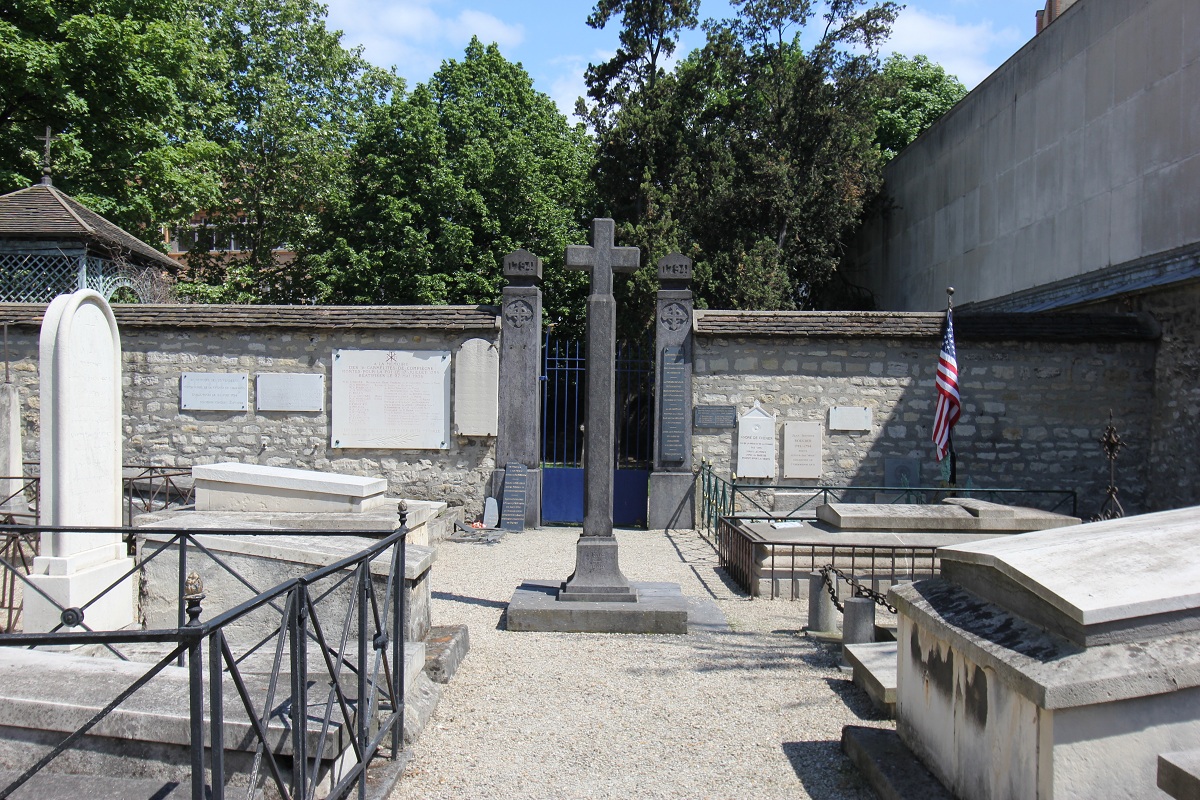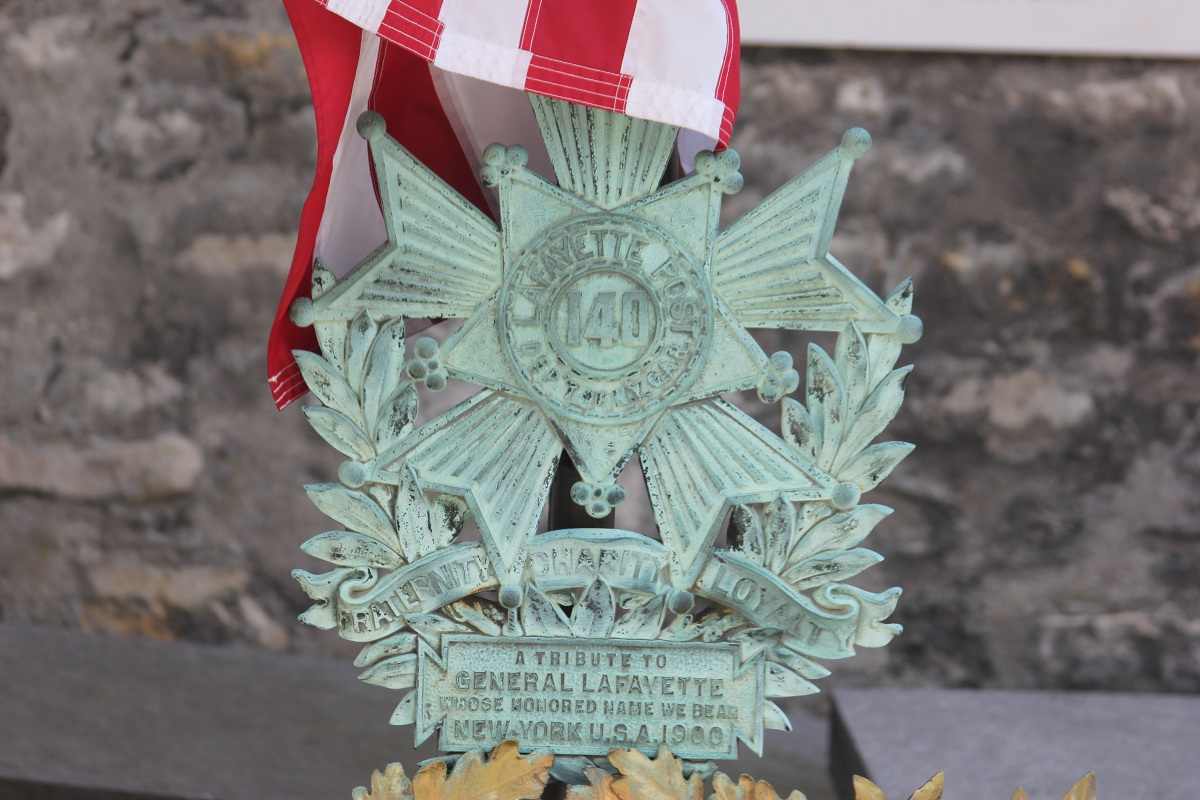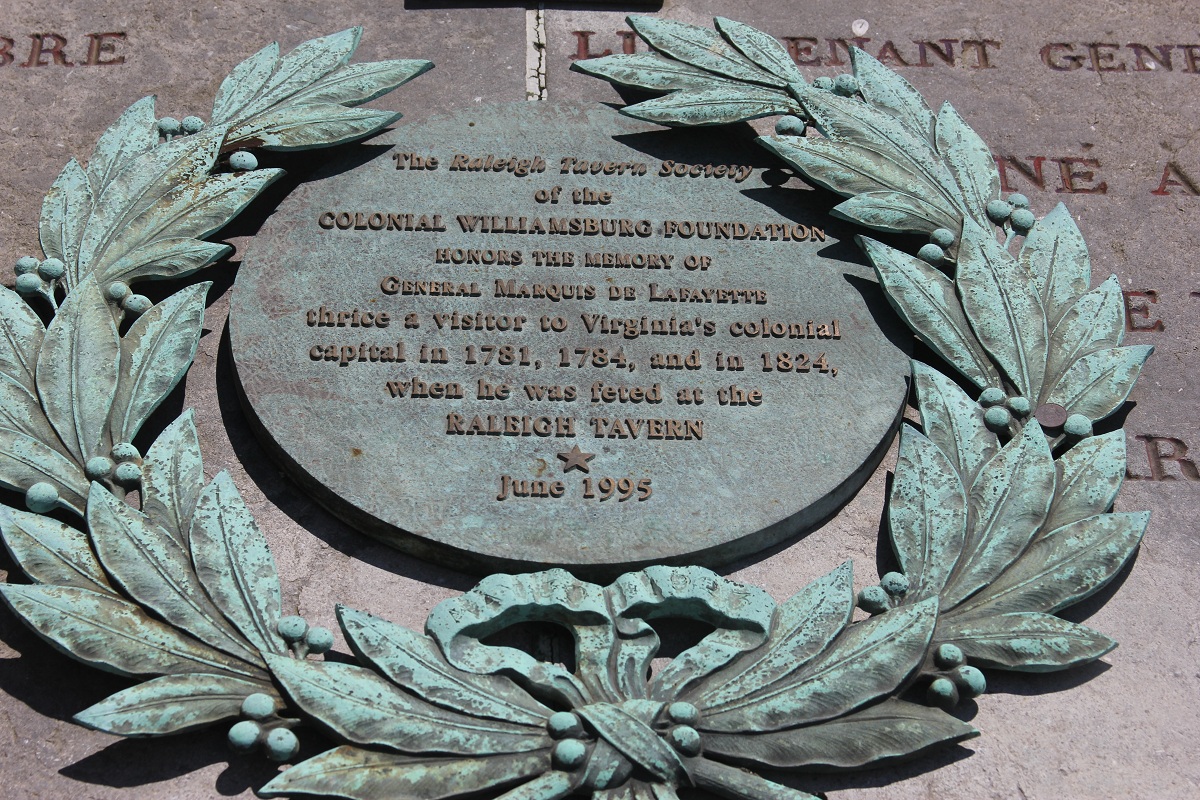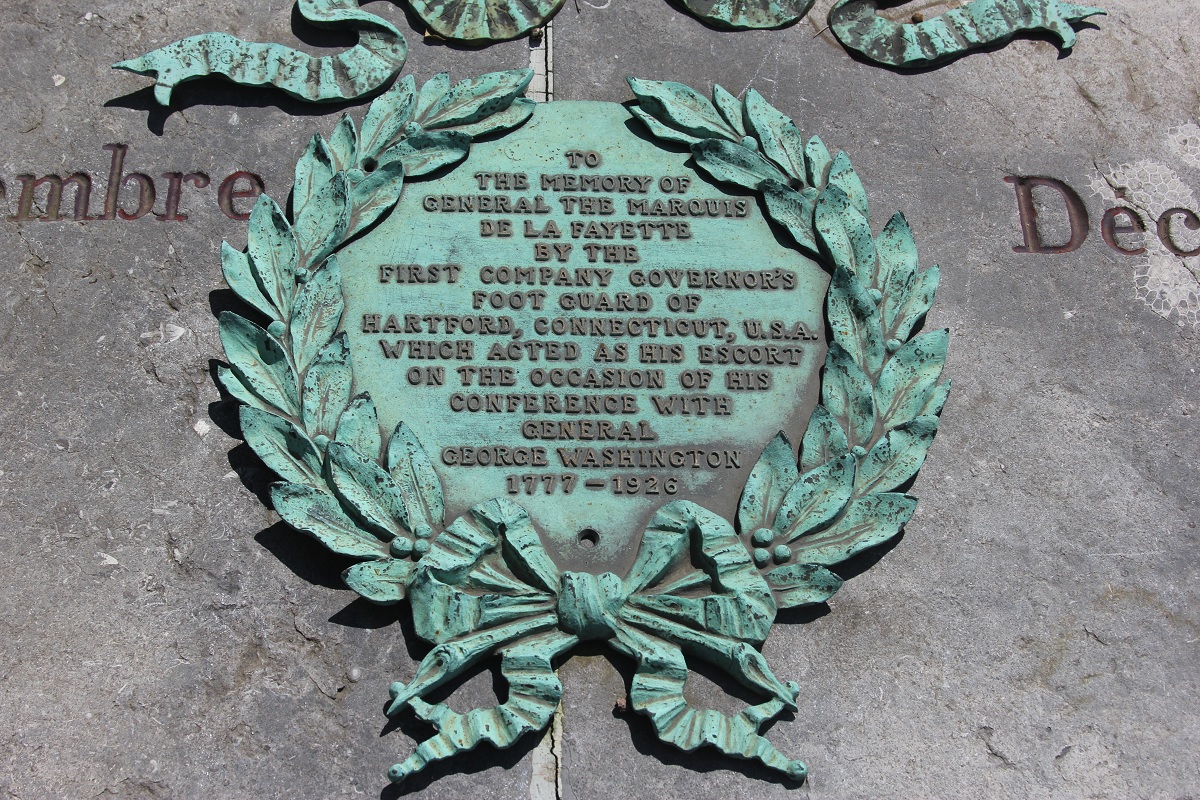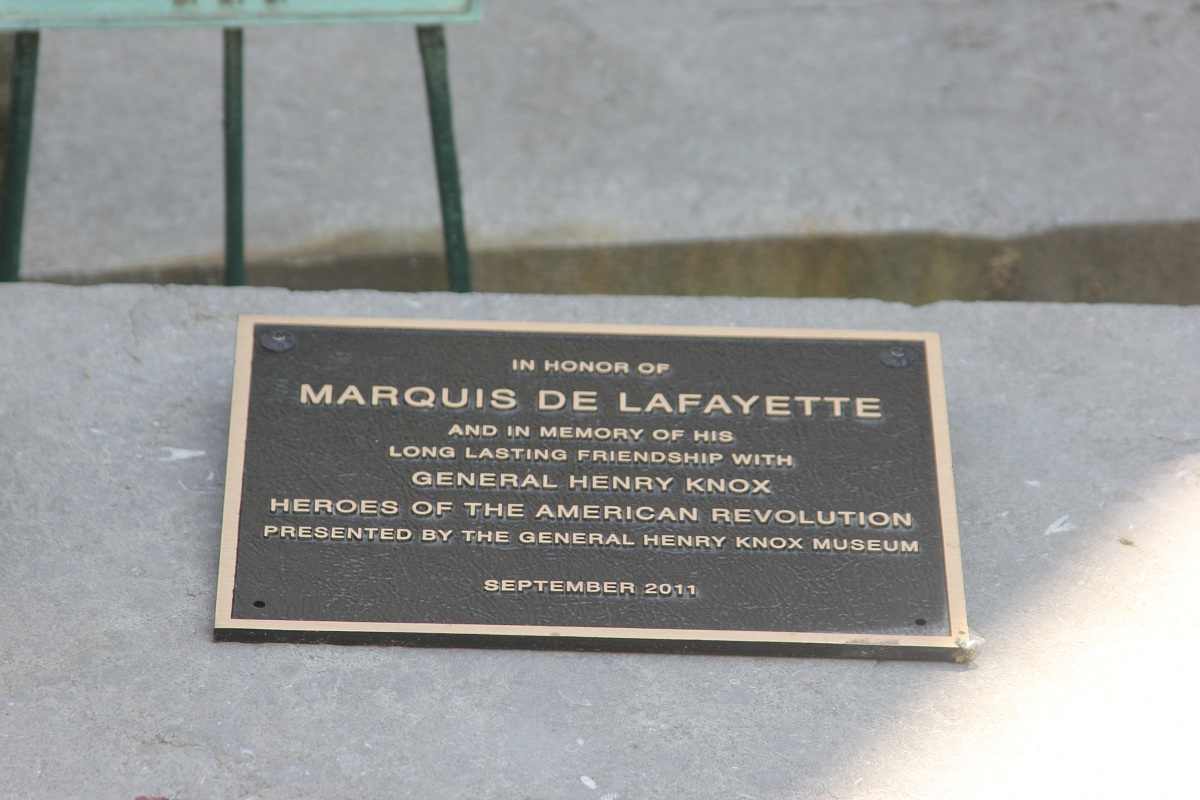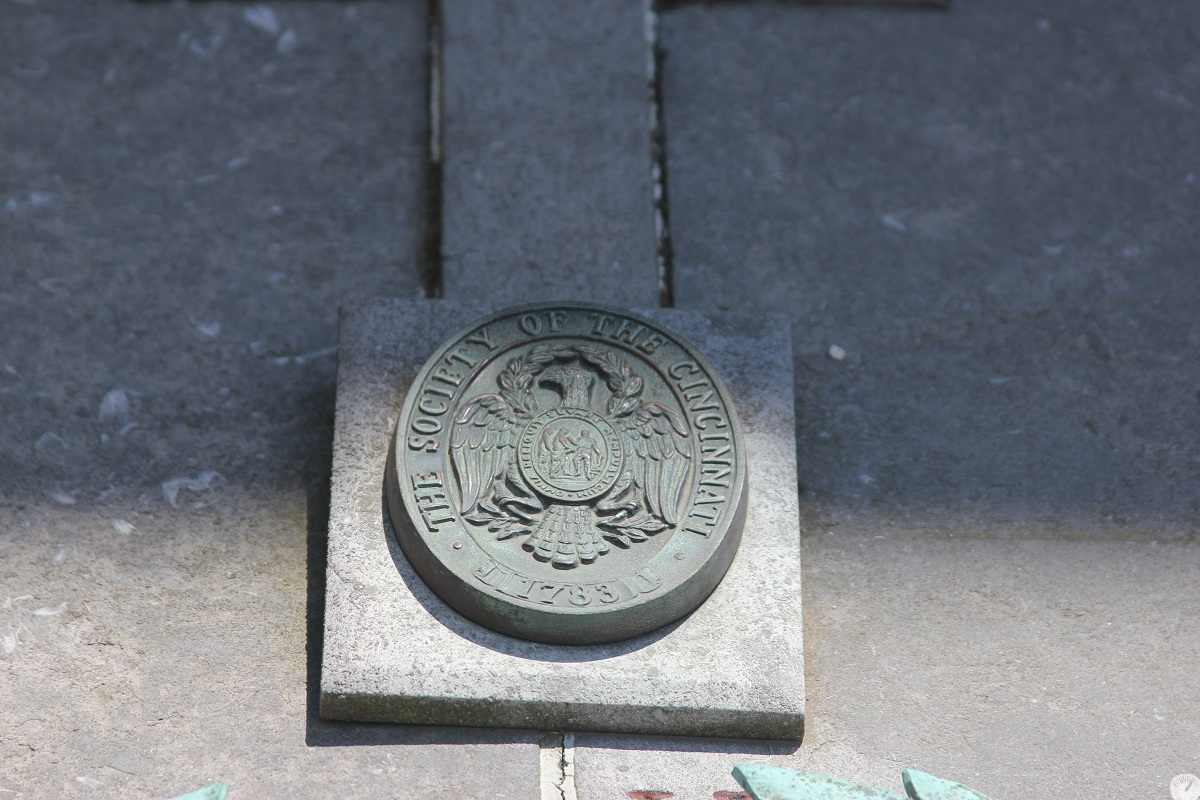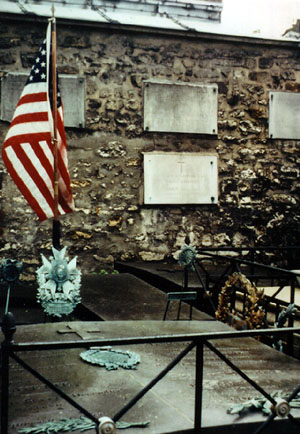Revolutionary War Continental Army Major General. He was a French officer, who is recognized as a hero of the American Revolutionary War. After the outbreak of the Revolutionary War in British Colonial America, he offered his services to the colonists and refused to take any pay for his services while spending much of his own money to outfit the American Colonial Army with shoes and clothing. Born Marie-Joseph-Paul-Yves-Roch-Gilbert du Motier into one of France's wealthiest families, he was age two when his father, a colonel in the French Grenadiers, was killed on a German battlefield; age twelve when his mother died of cancer; and three weeks later, his maternal grandfather died, leaving him a very rich young orphan. He entered the Royal Army at age fourteen and was married at sixteen to Marie de Noailes, a member of the wealthiest family in France, who was related directly to King Louis XVI. When the English colonies in America declared their independence, Lafayette, in the style of a soldier of fortune, decided to participate. He bought a ship, fitted in for a journey to America, and with eleven other officers, was ready for the trip. However, the King Louis XVI of France ordered his ship, the "Victory," seized and had Lafayette arrested. The "Victory" escaped to a Spanish port where the arrested Lafayette escaped, joining the crew and ship in Spain. Upon arrival in America, his military service was accepted, and he was made a Major General. He was severely wounded in a battle near Philadelphia. After his recuperation and with only three thousand poorly trained men, he marched against British General Charles Cornwallis in Virginia with great success. In the last battle of the Revolution, fought at Yorktown against a fortified Cornwallis, Lafayette surrounded him while the French fleet sailed up the Chesapeake Bay and blocked any escape by sea, forcing the British General to surrender. With independence secured, Lafayette returned to France only to journey back, making a triumphal visit, traveling through ten states of the Union, and then staying with George Washington at Mount Vernon. Years later, during President James Monroe's era, Congress invited him back, and a delighted Lafayette visited each state of the Union. Congress voted to give him $200,000 as well as land in Florida and Louisiana. He died ten years later and was buried beside his wife. The grave was sprinkled with earth from the United States, and an American flag flies daily beside the site. The flag is provided by the Paris Chapter of the Daughters of the American Revolution and even flew during the occupation of France by Nazi Forces during World War II. When American troops arrived in France during World War I, they were heard crying, "Lafayette, We Are Here!" Buildings, streets, and towns have been named in honor of the General across America, but Washington has the most significant in Lafayette Square. It is a seven-acre park located directly north of the White House, which was at one time part of the grounds surrounding the Executive Mansion. The Square was separated from the White House grounds in 1804 when President Thomas Jefferson had Pennsylvania Avenue cut through. Twenty years later, it was officially named in honor of General Lafayette. Erected on the four corners of the park are statues of foreign Revolutionary War heroes: General Marquis Gilbert de Lafayette, which was erected first, and Major General Comte Jean de Rochambeau from France; General Thaddeus Kosciuszko from Poland; and Major General Baron Frederich Wilhelm von Steuben from Prussia. Besides Washington D. C., Lafayette Squares is located in other cities in the United States: New Orleans, Savannah, St. Missouri, and Los Angeles, to name a few.
Revolutionary War Continental Army Major General. He was a French officer, who is recognized as a hero of the American Revolutionary War. After the outbreak of the Revolutionary War in British Colonial America, he offered his services to the colonists and refused to take any pay for his services while spending much of his own money to outfit the American Colonial Army with shoes and clothing. Born Marie-Joseph-Paul-Yves-Roch-Gilbert du Motier into one of France's wealthiest families, he was age two when his father, a colonel in the French Grenadiers, was killed on a German battlefield; age twelve when his mother died of cancer; and three weeks later, his maternal grandfather died, leaving him a very rich young orphan. He entered the Royal Army at age fourteen and was married at sixteen to Marie de Noailes, a member of the wealthiest family in France, who was related directly to King Louis XVI. When the English colonies in America declared their independence, Lafayette, in the style of a soldier of fortune, decided to participate. He bought a ship, fitted in for a journey to America, and with eleven other officers, was ready for the trip. However, the King Louis XVI of France ordered his ship, the "Victory," seized and had Lafayette arrested. The "Victory" escaped to a Spanish port where the arrested Lafayette escaped, joining the crew and ship in Spain. Upon arrival in America, his military service was accepted, and he was made a Major General. He was severely wounded in a battle near Philadelphia. After his recuperation and with only three thousand poorly trained men, he marched against British General Charles Cornwallis in Virginia with great success. In the last battle of the Revolution, fought at Yorktown against a fortified Cornwallis, Lafayette surrounded him while the French fleet sailed up the Chesapeake Bay and blocked any escape by sea, forcing the British General to surrender. With independence secured, Lafayette returned to France only to journey back, making a triumphal visit, traveling through ten states of the Union, and then staying with George Washington at Mount Vernon. Years later, during President James Monroe's era, Congress invited him back, and a delighted Lafayette visited each state of the Union. Congress voted to give him $200,000 as well as land in Florida and Louisiana. He died ten years later and was buried beside his wife. The grave was sprinkled with earth from the United States, and an American flag flies daily beside the site. The flag is provided by the Paris Chapter of the Daughters of the American Revolution and even flew during the occupation of France by Nazi Forces during World War II. When American troops arrived in France during World War I, they were heard crying, "Lafayette, We Are Here!" Buildings, streets, and towns have been named in honor of the General across America, but Washington has the most significant in Lafayette Square. It is a seven-acre park located directly north of the White House, which was at one time part of the grounds surrounding the Executive Mansion. The Square was separated from the White House grounds in 1804 when President Thomas Jefferson had Pennsylvania Avenue cut through. Twenty years later, it was officially named in honor of General Lafayette. Erected on the four corners of the park are statues of foreign Revolutionary War heroes: General Marquis Gilbert de Lafayette, which was erected first, and Major General Comte Jean de Rochambeau from France; General Thaddeus Kosciuszko from Poland; and Major General Baron Frederich Wilhelm von Steuben from Prussia. Besides Washington D. C., Lafayette Squares is located in other cities in the United States: New Orleans, Savannah, St. Missouri, and Los Angeles, to name a few.
Bio by: Donald Greyfield
Family Members
Other Records
Advertisement
See more Lafayette memorials in:
Advertisement
